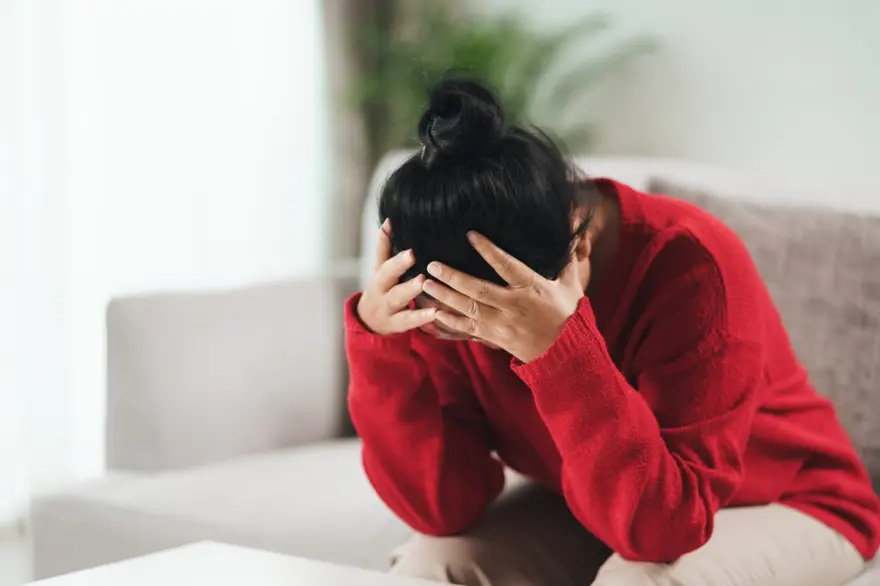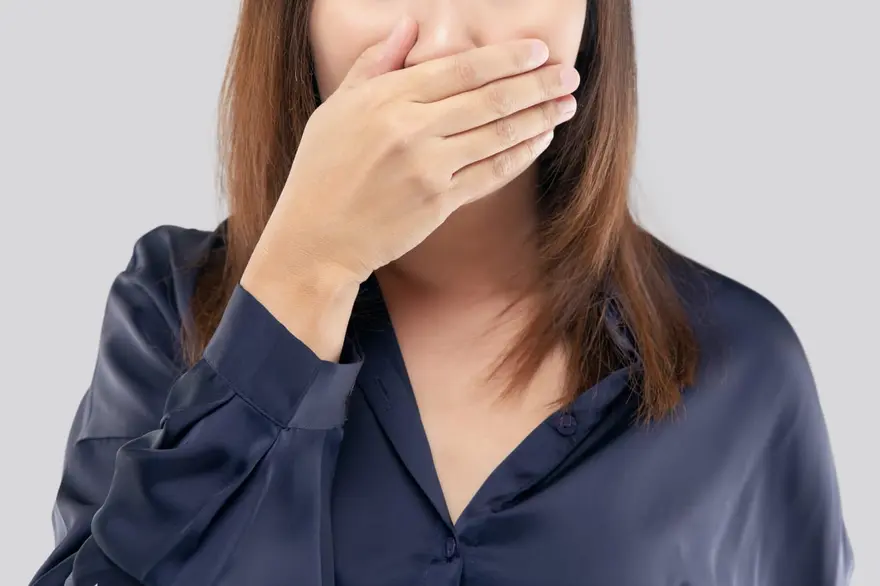Preventive Healthcare
The Link Between Seasonal Affective Disorder (SAD) and Winter Health
143 Views
0

What is Seasonal Affective Disorder (SAD)?
Seasonal affective disorder (SAD) is a form of depression that occurs with the change of seasons. Most people with SAD experience the symptoms during the fall and winter, when there is less natural sunlight. These SAD symptoms typically begin in late autumn, peak during the winter, and subside in the spring and summer.
Seasonal affective disorder (SAD) is more than just feeling a bit down during the colder months. It is a recognised mental health disorder that can significantly impact a person's daily life, affecting their mood, energy levels, sleep patterns, and appetite.
What are the Symptoms and Effects of Seasonal Affective Disorder (SAD)?
Seasonal affective disorder (SAD) symptoms are similar to those of major depression but occur in a seasonal pattern.
Common SAD symptoms include:
- Feeling depressed most of the day, nearly every day
- Losing interest in activities you once enjoyed
- Having low energy and feeling sluggish
- Experiencing changes in appetite or weight
- Having difficulty sleeping or oversleeping
- Feeling hopeless, worthless, or guilty
- Having difficulty concentrating
- Experience thoughts of death or suicide
In addition to these symptoms, people with winter-pattern seasonal affective disorder (SAD) may also experience:
- Oversleeping (hypersomnia)
- Overeating, particularly craving carbohydrate-rich foods
- Weight gain
- Social withdrawal
What Causes Seasonal Affective Disorder (SAD)?
The exact cause of seasonal affective disorder (SAD) is not fully understood, but several factors are believed to contribute to the development of this seasonal depression:
- Reduced sunlight exposure: Reduced sunlight and shorter days in fall and winter can disturb your body's internal clock (circadian rhythm), causing the depression.
- Serotonin Levels: Serotonin is a brain chemical (neurotransmitter) which affects mood. Reduced sunlight can cause a drop in serotonin levels, which may trigger depression.
- Melatonin Levels: Melatonin is a hormone that helps regulate sleep patterns. The change in seasons can disrupt the balance of melatonin, leading to sleep problems and mood changes.
- Vitamin D Deficiency: Sunlight is a key source of vitamin D, important for making serotonin. With less sunlight in winter, a vitamin D deficiency can occur, potentially leading to depression symptoms.
What is the Impact of Winter on Mental and Physical Health?
Winter can significantly affect both mental and physical health, worsening conditions like SAD and seasonal depression while also raising new health challenges.
Here are some key areas where winter health problems occur:
Common Winter Health Issues
During the colder months, respiratory problems like asthma and COPD can worsen due to the cold air. Cardiovascular issues are also a concern, as cold temperatures elevate blood pressure, increasing the risk of heart attacks and strokes. Infections like colds and flu peak in winter, and joint pain often intensifies, especially for people with arthritis.
Importance of Winter Health Concerns
Winter can have a big effect on mental health. Reduced sunlight and colder weather can cause seasonal affective disorder (SAD), leading to feelings of isolation, loneliness, and depression. It’s important to pay attention to both emotional and physical health, as they both impact overall well-being. Staying aware of how you feel during winter is crucial for avoiding seasonal depression.
The Link Between Seasonal Affective Disorder and Winter Health
Seasonal affective disorder (SAD) and winter health are closely linked, as the colder months often worsen symptoms of seasonal depression. Let’s explore this relationship further:
Exploring the Relationship Between SAD and Winter
Seasonal affective disorder (SAD) is a type of seasonal depression that typically occurs specific times of the year, most commonly in winter. Contributing factors such as reduced daylight and colder weather triggers SAD, making winter months particularly challenging for those affected. This disorder can cause a feeling of sadness, fatigue, and lack of motivation, which can impair daily activities.
How Winter Exacerbates Symptoms of SAD
The lack of sunlight during winter disrupts the body’s circadian rhythm, which affects mood-regulating hormones like serotonin. This can disrupt the symptoms of seasonal affective disorder (SAD), resulting in lower energy levels, increased sleep, and weight gain. Also, cold temperatures make people discourage outdoor activities, limiting their exposure to natural light and physical exercise, both important for mental health.
Factors Contributing to the Connection Between SAD and Winter
Several factors link seasonal depression or SAD to winter. With less sunlight, vitamin D and serotonin levels are also reduced. Shorter days and longer nights can cause mood drop, while holiday stress and social isolation often increase in colder months.
These factors collectively can worsen the SAD symptoms, making winter a challenging season for mental health.
How is Seasonal Affective Disorder (SAD) Diagnosed?
Diagnosing seasonal affective disorder (SAD) includes an evaluation of a person's symptoms, medical history, and seasonal patterns. A mental health professional, like a psychiatrist or psychologist, will typically:
- Ask about your symptoms, including when they started, how long they last, and how they impact your daily life
- Check your family history of mental health issues
- Perform a physical exam to rule out other health conditions that might be causing your SAD symptoms
- Use diagnostic criteria from the Diagnostic and Statistical Manual of Mental Disorders (DSM-5) to determine if you meet the criteria for SAD
How is SAD Different from Regular Depression?
While seasonal affective disorder (SAD) shares many symptoms with major depressive disorder, there are some key differences:
- Seasonal Pattern: Seasonal affective disorder (SAD) follows a seasonal pattern, with symptoms typically appearing in the fall and winter months and improving in the spring and summer. Regular depression can occur at any time of the year and does not follow a specific seasonal depression pattern.
- Specific symptoms: People with winter-pattern seasonal affective disorder (SAD) may experience symptoms such as oversleeping, carbohydrate cravings, and weight gain, which are less common in regular depression.
- Duration: Seasonal affective disorder (SAD) symptoms typically last for about 4-5 months, coinciding with the fall and winter seasons. Regular depression may last for longer periods or have a more unpredictable duration.
Is SAD More Common in Certain Geographical Areas?
Yes, seasonal affective disorder (SAD) is more common in regions that are farther from the equator and experience shorter days and longer nights during the winter months. For example, seasonal affective disorder (SAD) is more dominant in countries like Canada, Denmark, and the United Kingdom, compared to countries closer to the equator, such as those in the Caribbean or Southeast Asia.
In India, seasonal affective disorder (SAD) is lower as compared to countries at higher latitudes. However, it’s still essential for people experiencing seasonal depression or mood changes to seek help from a mental health professional.
Are There Any Risk Factors for Developing Seasonal Affective Disorder (SAD)?
Several factors can increase a person's risk of developing seasonal affective disorder (SAD), including:
- Being Female: SAD is diagnosed more often in women than in men, although men may have more severe symptoms
- Age: Younger adults are more likely to have SAD, and the risk decreases with age
- Family History: Having a family member with SAD or another form of depression can increase your risk
- Mental Health Disorders: People with a history of depression, bipolar disorder, or other mental health issues are at a higher risk for SAD
- Living Far from the Equator: As mentioned, living in areas with shorter days and less sunlight in winter can increase the risk of SAD
Can Children and Teenagers Experience SAD?
Yes, children and teenagers can experience seasonal affective disorder (SAD), although it is less common than in adults.
Signs of SAD in children and teens may include:
- Irritability
- Difficulty concentrating
- Changes in appetite
- Fatigue
- Difficulty waking up in the morning
- Social withdrawal
If you suspect your child or teen has seasonal affective disorder (SAD), it's important to consult to a pediatrician or mental health professional for proper diagnosis and treatment.
What are Some Effective Treatments for Seasonal Affective Disorder (SAD)?
There are several effective seasonal affective disorder treatment options available, including:
- Light Therapy: Light therapy involves sitting in front of a bright artificial light for a specific time each day. This can help regulate your circadian rhythm and increasing serotonin levels, which can improve mood and reduce SAD symptoms
- Psychotherapy: Cognitive-behavioral therapy (CBT) is a type of therapy that helps you identify and change negative thoughts patterns and behaviors contributing to SAD. CBT can also help you develop coping strategies to stress management and improving your overall well-being
- Medication: Antidepressant medications, such as selective serotonin reabsorption inhibitors (SSRIs), can be helpful for treating SAD. Your doctor can help decide if medication is right for you and monitor your progress.
- Lifestyle Changes: Making simple lifestyle changes, like exercising regularly, eating a healthy diet, and maintaining a consistent sleep schedule, can help alleviate SAD symptoms.
It’s important to collaborate with a mental health professional to create a personalized treatment plan that meets your specific needs and concerns.
How Can I Differentiate Between Feeling Down During Winter and Having SAD?
It's normal to experience some mood changes during the winter months, but how can you tell if it's more than just the winter blues?
Here are some signs that you may be experiencing seasonal affective disorder (SAD):
- Your symptoms are severe enough to interfere with your daily life and relationships
- You experience symptoms for a significant portion of the day, nearly every day
- Your symptoms follow a seasonal pattern, from beginning in the fall, peaking in the winter, and improving in the spring
- You’ve had these symptoms of seasonal depression for at least two years in a row
If you're unsure whether you're experiencing seasonal affective disorder (SAD) or just feeling down, it's always best to consult with a mental health professional for an accurate diagnosis and appropriate treatment.
Can SAD Affect Our Physical Health as Well?
Yes, seasonal affective disorder (SAD) can have an impact on your physical health.
Some ways in which SAD can affect your physical well-being include:
- Weakened immune system: Seasonal depression, including SAD, can weaken your immune system, making you more prone to colds, flu, and other illnesses
- Weight gain: People with winter-pattern SAD often crave carbohydrate-rich foods, which can cause weight gain
- Fatigue: SAD can cause feelings of fatigue and low energy, making it difficult to engage in physical activity and maintain a healthy lifestyle
- Chronic Pain: Depression, including SAD, has been linked to an increased risk of chronic pain conditions, such as fibromyalgia and arthritis
By addressing your seasonal affective disorder (SAD) symptoms through treatment and self-care strategies, you can also help improve your overall physical health and well-being.
Are There Any Self-Help Strategies for Managing SAD Symptoms?
In addition to seeking professional treatment, there are several self-help strategies you can use to manage SAD symptoms:
- Get outside: Even on cold or cloudy days, spending time outdoors can help boost your mood and increase your exposure to natural light
- Exercise Regularly: Physical activity can help in stress reduction, improve sleep, and lift your mood. Aim to get at least 30 minutes of moderate exercise on most days of the week.
- Maintain a Consistent Sleep Schedule: Try to go to bed and wake up at the same time each day to regulate your body’s internal clock on track.
- Eat a Healthy Diet: Focus on consuming a balanced diet rich in fruits, vegetables, whole grains, and lean proteins. Try to limit processed foods and sugary snacks.
- Stay Connected: Maintain social connections with friends and family, even if it's through virtual means. Social support can help combat feelings of isolation and loneliness.
- Practice Stress-Reduction Techniques: Engage in activities that help you relax and manage stress, such as meditation, deep breathing exercises, or yoga.
Can Light Therapy Be Beneficial for SAD?
Light therapy, known as phototherapy, is a common and effective treatment for seasonal affective disorder (SAD). It involves a process of exposing yourself to a bright, artificial light source for a set time each day, usually in the morning. Light therapy functions by replicating natural outdoor light and keeping your body’s internal clock in sync.
Can We Prevent Seasonal Affective Disorder (SAD)?
While it may not always be possible to completely prevent seasonal affective disorder (SAD), there are several proactive steps you can take to reduce the risk of developing it or minimise its effects.
- One of the most effective strategies is ensuring a regular exposure to natural light. Spending time outdoors during the day, even in winter, helps regulate your body’s internal circadian rhythm, which can get disrupted up in the colder months
- Light therapy involves using a specially designed lightbox, can also simulate sunlight and help alleviate symptoms.
- Maintaining a consistent sleep schedule, eating a well-balanced diet, and staying physically active are other ways to support your mental health and help to prevent the onset of SAD
How Can We Support a Loved One with SAD During Winter?
Supporting a loved one with seasonal affective disorder (SAD) requires understanding, patience, and practical help.
- Encourage them to seek professional advice from a healthcare provider who can recommend treatments like light therapy, counselling, or medication.
- Help them create a routine that includes regular outdoor activities, even if it’s just a short walk, to increase exposure to natural light.
- Encourage physical exercise, which boosts mood and energy levels.
- Emotional support is equally important—offering a listening ear, spending time together, and acknowledging their struggles can help reduce feelings of isolation.
- Be mindful of their need for rest and don’t pressure them into social activities if they’re not ready.
Are There Any Preventive Measures to Reduce the Risk of Developing SAD?
To reduce the risk of developing SAD, you can adopt several preventive measures.
- Increase exposure to sunlight by spending time outdoors or positioning yourself near windows during daylight hours
- Using a lightbox for light therapy before symptoms appear is a common preventive method for those prone to SAD
- Regular exercise is another great way to improve your mood because it increases endorphin levels
- Maintaining a balanced diet rich in vitamins and nutrients, especially vitamin D, also helps support mental health during winter
- Practising mindfulness or meditation can reduce stress, which may reduce the risk of developing SAD
Conclusion
Seasonal affective disorder (SAD) is a form of seasonal depression that affects many individuals during the winter months, but it can be managed with the right strategies. Whether through light therapy, lifestyle changes, or professional help, it’s important to address seasonal depression early. But remember, while self-help strategies can be beneficial, they should not replace professional treatment for SAD. If your symptoms are severe or interfering with your daily life, consult with a mental health professional.
Seasonal affective disorder (SAD) is a type of seasonal depression that affects many individuals during winter, but it can be managed with the right strategies. It can include light therapy, lifestyle changes, or getting professional help.
It's important to identify seasonal depression early. Remember, while self-help methods can be helpful, they shouldn’t replace professional treatment. If your symptoms are severe or impact your daily life, consult a mental health professional.
Prioritising your health is crucial during this time, as maintaining mental well-being goes hand in hand with monitoring physical health. For those looking to take control of their health, consider exploring the services offered by Metropolis Healthcare. They provide essential screenings, personalised health assessments, and support to help you manage your overall well-being during the colder months, ensuring you stay healthy and resilient throughout the winter.
 Home Visit
Home Visit Upload
Upload













1701259759.webp)









 WhatsApp
WhatsApp